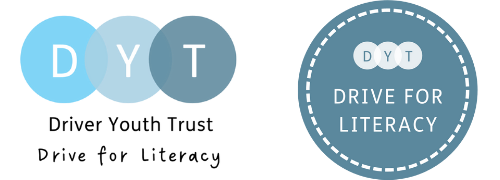
Reading gaps: how to recover and improve reading skills
7/12/2020
Throughout this term Ofsted have carried out pilot visits to assess how schools and learners were reacting to the pandemic. Their findings highlight areas that many schools are focusing on in order to address the reading gaps of their learners. The report also highlights the steps schools are taking in order to get back to some degree of normality, with most hoping to return to their full, normal curriculum by Summer 2021.
Interpreting the findings
Since the sample size is relatively small (only 121 settings were visited), we need to be cautious when interpreting the report’s findings. Learners had also only been back in school for the autumn term for a short period of time. Things might well have changed since the initial visits, with schools having a clearer understanding of reading gaps their learners have.
Whilst some leaders commented that it was too soon to fully appreciate what gaps may exist, there were some areas that leaders consistently commented on:
- Reading, decoding and phonics
- Reading fluency and comprehension
Are the reading gaps new or historical?
What we do know is that gaps existed before the pandemic and its resulting lockdown. Some learners have always struggled to read and have experienced extreme difficulties accessing and understanding text in lessons. SEND statistics rose again in 2020, with 12.1% of learners at SEN Support and 3.3% having an EHCP. This equates to almost 1.3million learners with SEND. How have their needs changed over the last few months?
The interventions below looks at what teachers can do to help refresh and remind learners of the skills and strategies needed for reading and comprehension. These are the skills that helped learners develop good reading habits in the first place, so it may be a case of being consistent and reminding them over and over to use them when reading.
Developing phonics in primary settings

Create a bedrock for reading, ensure that letter sounds are secure and develop decoding skills with these intervention ideas:
- Refer back to the phonics programme used in the school. Use this content to remind learners of the skills they developed and stimulate their memory to re-ignite their use of phonics.
- Use manipulatives such as magnetic letters and get learners to sound out what they see. This can also be an opportunity to build in diagraphs which will help when decoding words.
- Use flashcards so that you can point out the letters and the sounds they make. This can also help develop sight vocabulary leading to automaticity.
- Model the sounding out process so that learners can see the shape your mouth makes when pronouncing letters and diagraphs. This will also help with speech development.
Reinforcing phonics in secondary settings

Remind older learners of letter sounds and encourage them to develop decoding and automacity:
- Encourage learners to break down words into syllables so that they can see the sounds within each word.
- Teach learners to look for patterns, prefixes or suffixes in words so that they can apply reading strategies they have been taught over the years. This is especially useful for identifying Phonics patterns in subject specific words.
- Use sounding out to reinforce how learners can breakdown challenging words within a text. This builds on phonics and is an effective strategy for tackling more complex vocabulary.
- Use assistive technology such as immersive reader on Microsoft word online to identify word categories and make use of the read aloud function so learners can hear letter sounds.
Reading fluency and comprehension

Support learners to develop their processing speeds to read quickly enough to make sense of what’s on the page with our fluency and comprehension tips:
- Break long passages into shorter blocks when projecting onto the whiteboard so that learners only focus on a limited amount of text.
- Check that learners understand what specific words actually mean. Could it be a language comprehension issue rather than a reading comprehension issue? Try our Exploring vocabulary using a checklist.
- Read texts aloud to learners so that they can follow what is happening and make sense of it without the pressure of decoding tricky words in the text. Pause and pose questions to explore what learners comprehend from the text so far.
- Explore subject specific words using the Frayer model so that learners have a clear understanding of the word and know when to use it. Check out our Frayer model template.
How can DYT help?
Driver Youth Trust has a suite of professional learning and development activities for teachers, teaching assistants and school leaders. We believe every young person should access the highest quality education that is responsive to their literacy needs. Our webinars, workshops and programmes are designed to support educators to develop their practices in order to better meet the needs of learners with literacy difficulties. Check out our professional learning offer here!
Kenny Wheeler
Senior Consultant Teacher, DYT
Kenny became a SENCo in 2002 and worked in senior leadership roles for over ten years. He has led SEN and Inclusion departments to Outstanding and was recognised as a lead SEND practitioner. Through consultancy, raising leadership capability and improving provision for SEND, he has delivered support to schools across the country.

